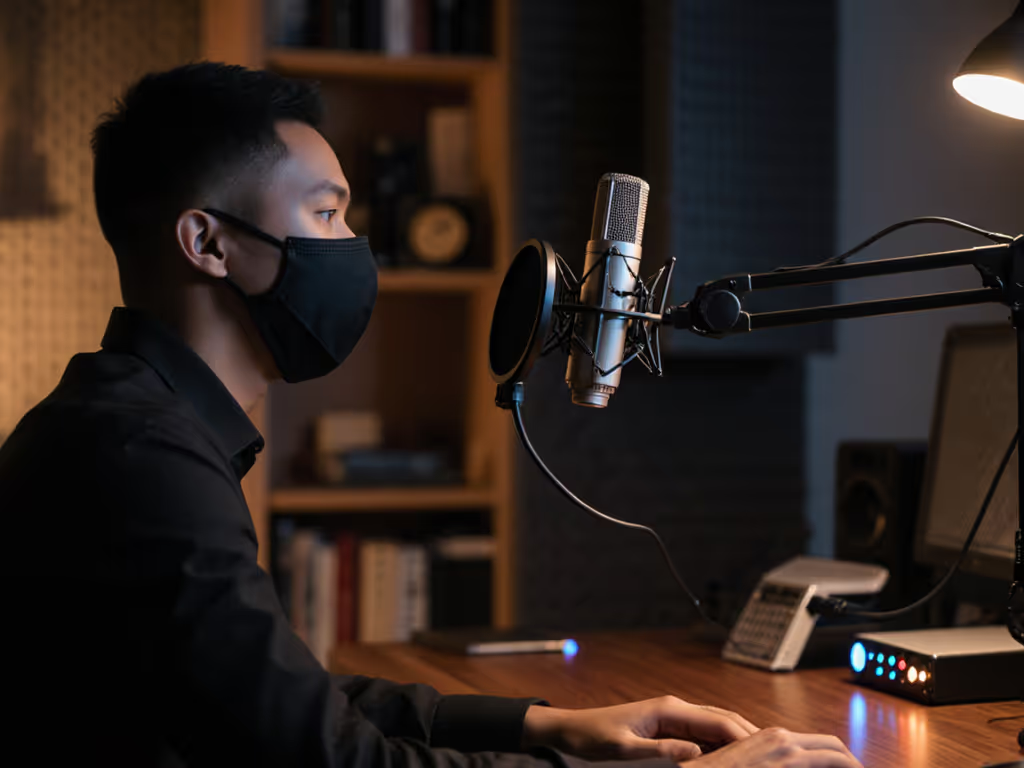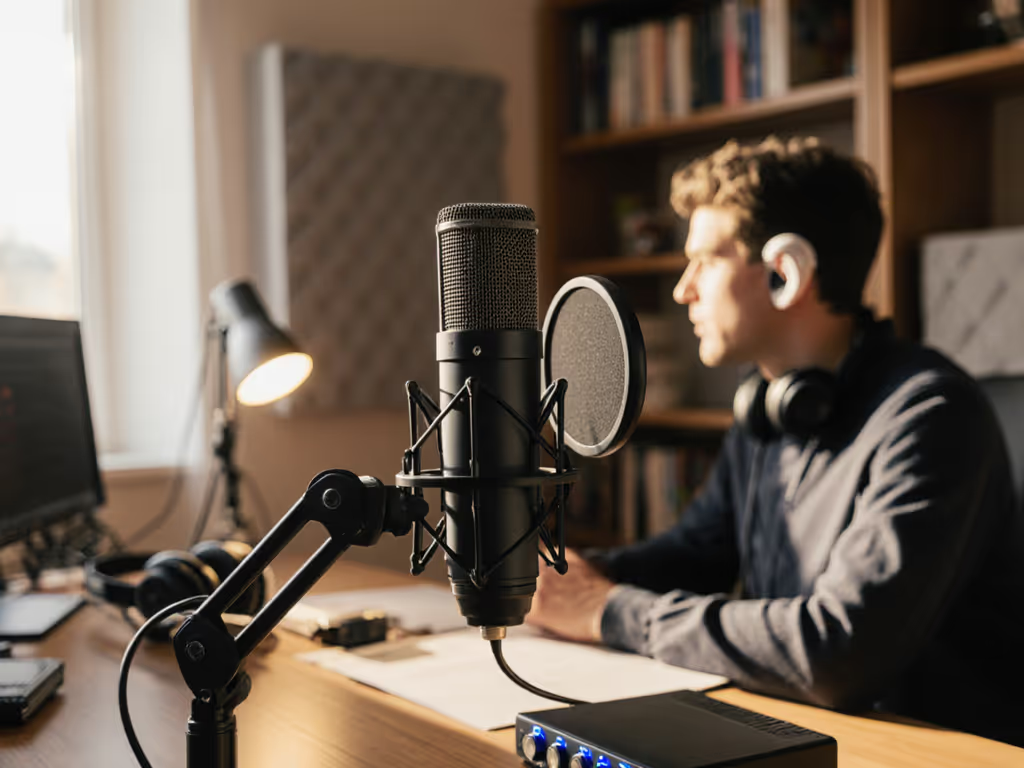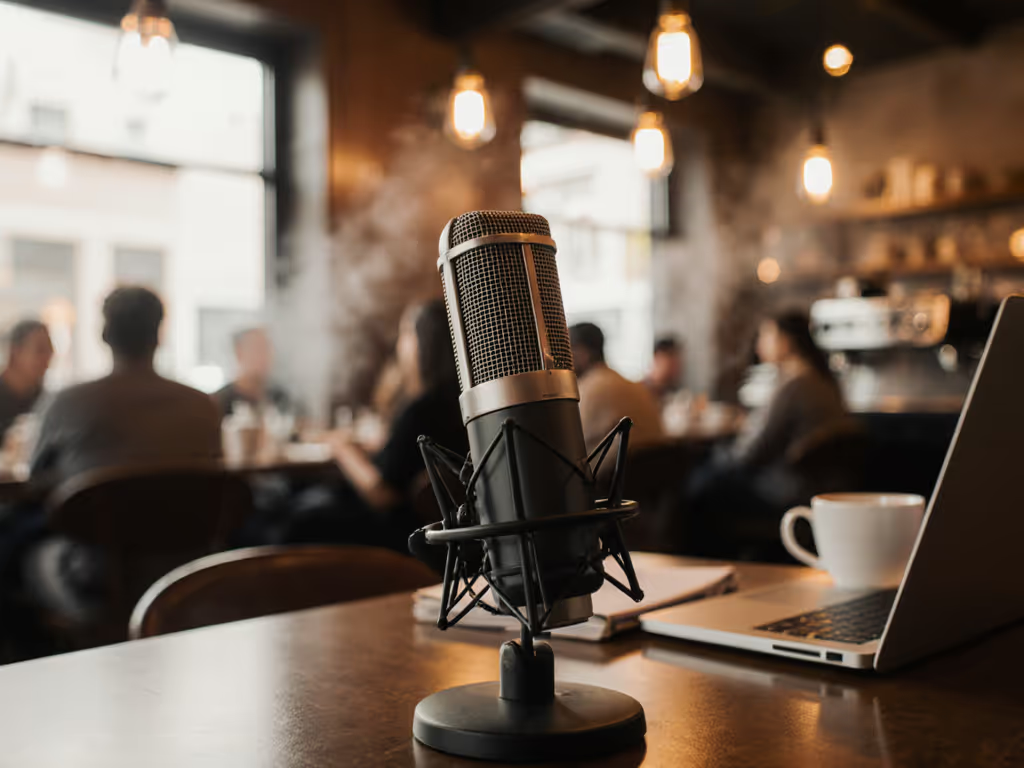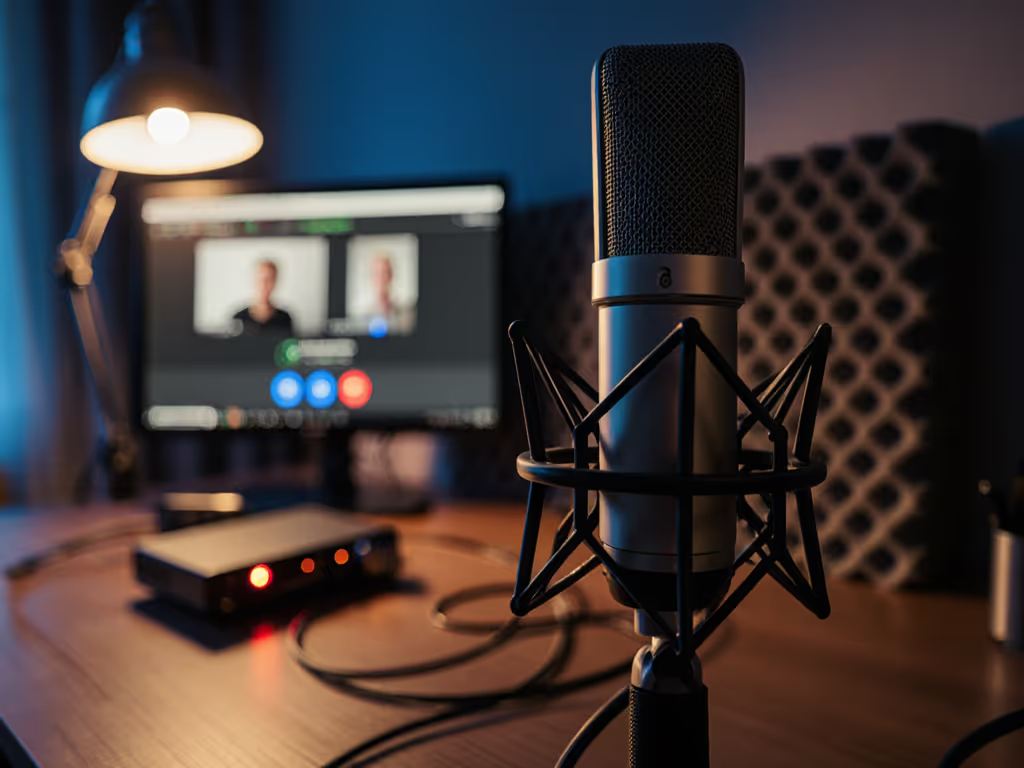
Basic Podcast Setup: Sync Multi-Host Recordings Perfectly
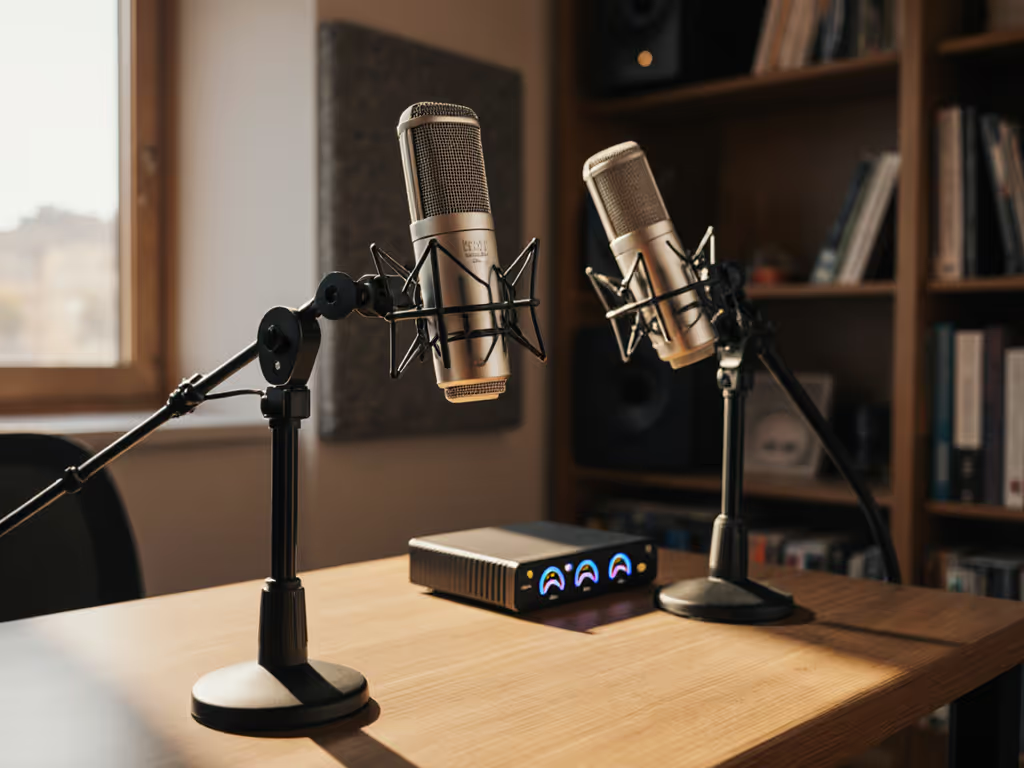
When your co-host's voice sounds like they're recording from a canyon while you're in a phone booth, your audience notices. A basic podcast setup that ensures perfectly synchronized recording isn't just about fancy software, it starts with eliminating the physical variables that cause mismatched audio between hosts. I've seen countless creators waste hours trying to "fix it in post" when the solution was visible in their recording space all along: inconsistent mic placement, desk resonance, and handling noise that undermine even the most expensive gear.
Why "Syncing Audio" Starts Before You Hit Record
Last year during a webinar, I watched a guest's hollow desk turn keyboard taps into thunderclaps through their condenser mic. We swapped to a compact dynamic on a damped arm, positioned 6 inches off-axis, and the noise vanished (no editing needed). This moment crystallized my core belief: A mic you don't have to fight produces better performances and faster edits. Synchronized recording isn't just about aligning waveforms in your DAW; it's about creating a repeatable environment where each host's audio naturally matches.
Multi-mic synchronization fails when your setup introduces variables that no software can consistently correct. Desk resonance travels differently through various surfaces. Handling noise creeps in when boom arms aren't positioned for stability. Room reflections interact unpredictably with untreated spaces. When these variables differ between hosts, your "synchronized" tracks still sound worlds apart.
Quiet hardware makes your voice the loudest thing in the room.
Step 1: Match Your Physical Setup Across Hosts
Positioning Checklist
For true multi-mic synchronization, your co-hosts' physical setups must be identical (down to the millimeter). Use this checklist for each position:
- Boom arm height: Position the mic capsule at nose level when seated
- Distance from mouth: Maintain exactly 5-6 inches (not 4 for one host and 8 for another)
- Off-axis placement: Angle mics 15-20 degrees off-center to reduce plosives without filtering your tone
- Arm stability: Extend boom arms to their shortest functional length to minimize vibration transfer
I recommend using a laser measure to verify distances, your ears will detect even 1-inch variations between hosts. When setting up, have each host speak the phrase "Peter Piper picked a peck" while you adjust. Listen for consistent plosive control and absence of desk resonance.
Most beginners position mics directly in front of their mouths, creating inconsistent sibilance and breath noise between hosts. Off-axis placement standardizes these variables. Touch nothing, sound great should be your mantra. When hosts don't need to adjust their position constantly, their energy goes into performance rather than mic technique.
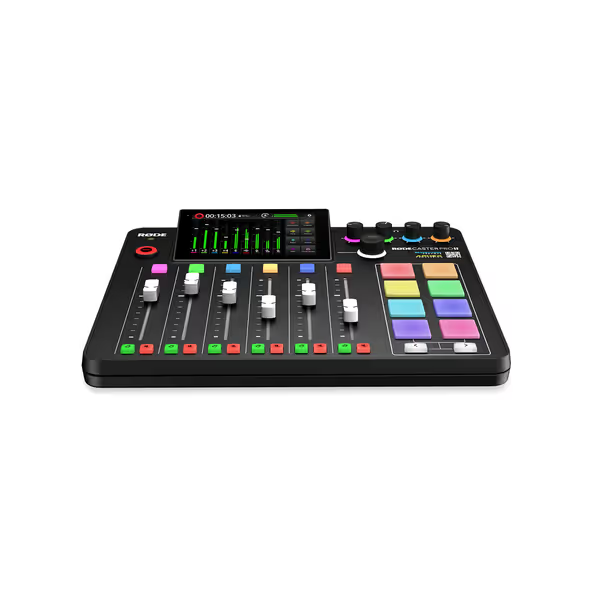
Rode Rodecaster Pro II
Step 2: Match Your Equipment Settings
Gain Staging Protocol
Consistent gain settings prevent the "I'm quieter than my co-host" problem that derails so many basic podcast setups. Follow this procedure:
- Have each host say your show's name at normal volume
- Set each channel's gain so vocal peaks hit -12dB on your interface
- Verify with a 10-second count: "5-4-3-2-1, we're recording"
- Compare waveforms. They should match in height and shape
Dynamic mics like the Universal Audio SD-1 handle this beautifully in untreated rooms because they reject more background noise than bright condensers. Their strong off-axis rejection means minor positioning differences matter less. If one host has a condenser and another has a dynamic, you've already lost the synchronization battle before recording begins.
For host audio balancing, close your eyes and listen to each track solo. If one voice sounds "boomy" while another is "thin," check these common culprits:
- Desk resonance picked up through different surfaces
- Mic handle contact (one host rests fingers on the boom arm)
- Chair squeaks transmitted differently through flooring
Step 3: Verify Synchronization Before Recording
The 60-Second Pre-Check
Don't waste time recording mismatched audio. Implement this verification process before every session:
- Clap test: Have all hosts clap sharply once while recording. Check your DAW. Claps should align perfectly vertically
- Room tone sample: Record 10 seconds of silence. Background noise levels should match across channels
- Phrase test: "Our podcast name starts now" (check for consistent plosive handling and volume)
I've worked with teams that cut editing time by 70% simply by implementing this pre-check. When room tone matches and plosives are controlled consistently, your multi-mic synchronization becomes a visual formality rather than a rescue mission. One producer I advised reduced retake risk by standardizing headphone types too (different drivers caused hosts to speak at inconsistent volumes relative to what they heard).
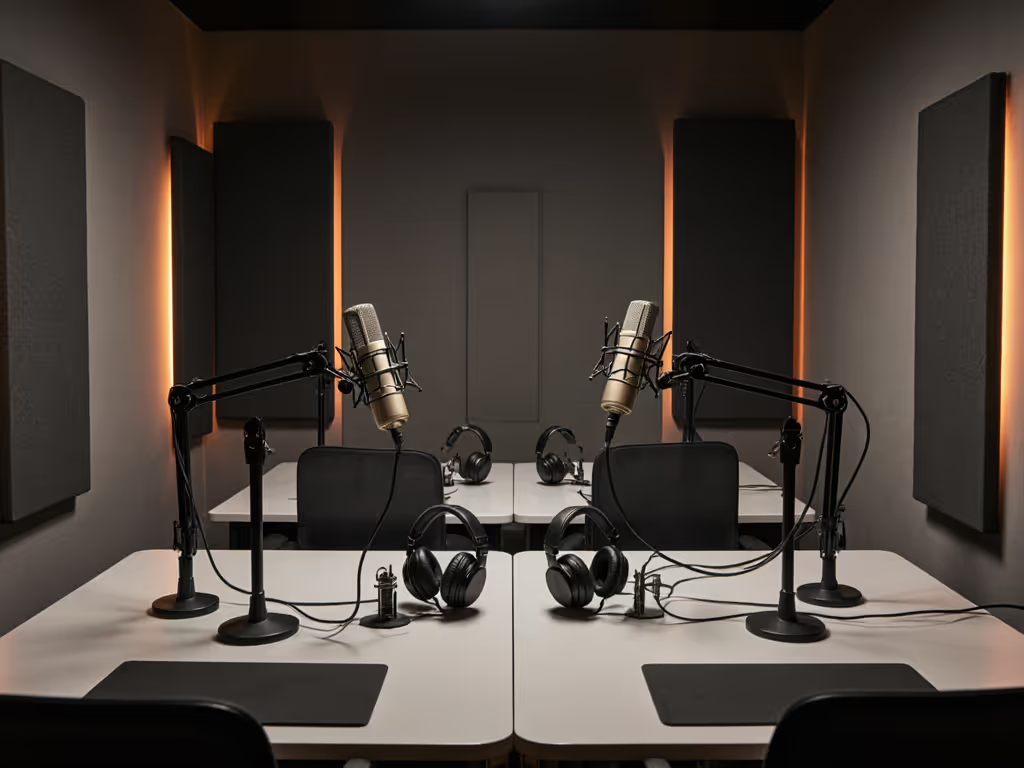
Step 4: Workflow for Minimal Editing
Zero-Post Philosophy
True synchronization means your raw tracks require minimal adjustment. When hosts have matching physical setups, identical equipment, and consistent technique, your recording software for groups becomes a playback tool rather than a correction suite.
Try this:
- Record your episode with matched setups
- Import tracks into your DAW
- Listen without any plugins or EQ
If you need significant gain adjustments, plosive removal, or noise reduction between channels, your synchronization happened too late in the process. The goal is zero-post audio where balancing takes seconds, not hours. The right mic accessories like pop filters and shock mounts can also reduce plosives and handling noise at the source. This approach respects your time-constrained reality. When your basic podcast setup eliminates variables upfront, you're free to focus on content rather than constant audio rescue.
Your Actionable Next Step
This week, conduct a "setup audit" with your co-hosts. Meet 15 minutes before your next recording session and verify these three elements match perfectly:
- The exact distance from each mouth to mic capsule
- The angle of each microphone relative to the speaker
- The gain settings on your interface (or USB mixer)
Record a 30-second test clip and listen critically. When these elements sync, your multi-host recordings will finally sound like a cohesive conversation rather than competing monologues. Remember: synchronized recording isn't magic, it's measurable, repeatable physics. And when your hardware behaves consistently, touch nothing, sound great becomes your reality rather than a dream.
Quiet hardware makes your voice the loudest thing in the room, and when multiple voices work in harmony, your audience stays focused on what matters: your conversation.

